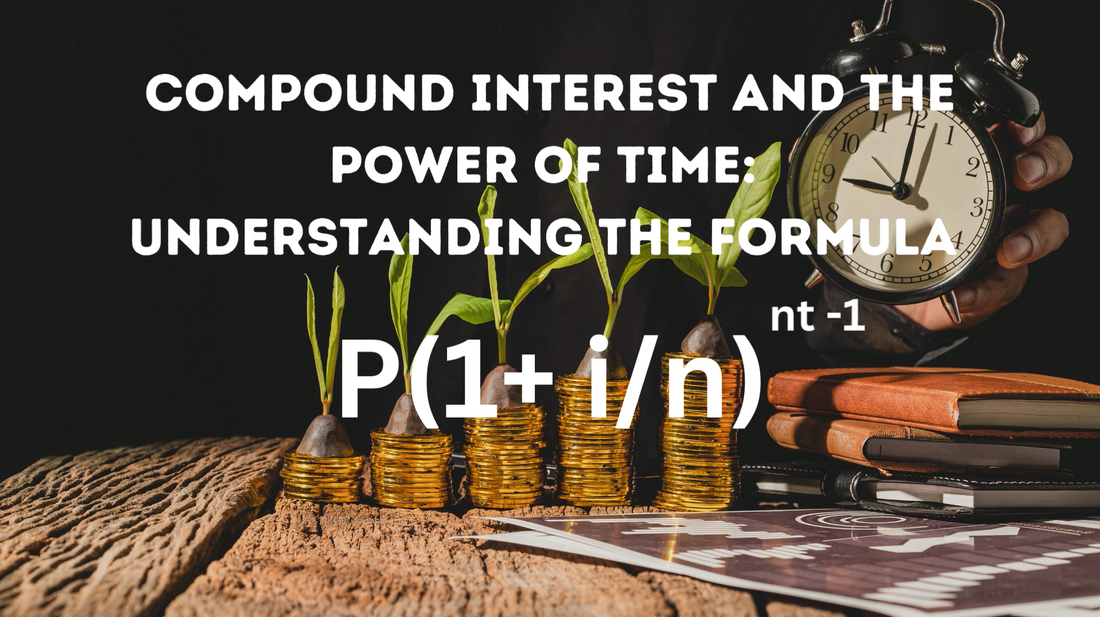
Compound Interest
Compound interest is a powerful concept in finance that allows investors to grow their wealth over time. It is a unique method of calculating interest that offers a potential for exponential growth and is different from simple interest, which is only earned on the original principal amount. The formula for calculating compound interest is represented as P[(1 + i/n)^nt -1], where P is the initial principal, i is the interest rate, n is the number of times the interest is compounded in a year, and t is the number of years the investment is held.
Investors have the power to significantly grow their wealth through compound interest, but it is important to understand the various factors that impact the growth of an investment. One of the most important factors to consider is the number of times interest is compounded in a year, n. The more frequently interest is compounded, the faster an investment will grow. For example, if interest is compounded daily, the investment will grow faster than if interest is compounded annually.
Another factor to consider is the interest rate. The higher the interest rate, the faster an investment will grow. But it is important to remember that interest rates are subject to change and can be influenced by various economic factors such as inflation and monetary policy. It’s crucial for investors to stay informed about changes in interest rates to make informed investment decisions.
The compounding factor, (1 + i/n)^nt, represents the growth of the investment over time and is an important component of the formula for calculating compound interest. The higher the compounding factor, the faster the investment will grow.
To better understand the formula, consider an example. An investor invests $10,000 at a 5% annual interest rate, compounded quarterly (four times per year), and holds the investment for 20 years.
Compound Interest Example:
The future value of the investment can be calculated as follows:
P = $10,000
i = 5% = 0.05
n = 4 (compounded quarterly)
t = 20 (years)
Future Value = P[(1 + i/n)^nt -1]
= $10,000[(1 + 0.05/4)^(4 x 20) -1]
= $10,000[(1.0125)^80 -1]
= $10,000[2.5736 – 1]
= $10,000 x 1.5736
= $15,736
In this example, the investor’s initial investment of $10,000 has grown to $15,736 after 20 years, demonstrating the power of compounding. This highlights the importance of considering the number of times interest is compounded, the interest rate, and the investment period when planning for long-term financial goals.
It’s also essential to remember that compounding works over a long period of time. The longer an investment is held, the more time interest has to compound, leading to exponential growth over time. This is why it’s crucial to start investing as early as possible and to be patient with investments, allowing them to grow over a long period of time.
In conclusion, the formula for calculating compound interest is a powerful tool for investors looking to grow their wealth over time. By understanding the impact of compounding and considering the key factors such as the number of times interest is compounded, the interest rate, and the investment period, investors can make informed investment decisions and potentially achieve their long-term financial goals.
Knowledge Expansion
There are several resources where you can learn more about compound interest and the formula P[(1+ i/n)^nt -1]:
- Online Investment and Finance Courses: Websites like Coursera, Udemy, and Khan Academy offer comprehensive courses on finance and investing that cover the basics of compound interest.
- Investing Websites: Websites like Investopedia, Morningstar, and The Motley Fool provide articles and tutorials on various investing topics, including compound interest.
- Financial Advisors: Working with a financial advisor can be an effective way to learn about compound interest and how it can be used to achieve your financial goals. A financial advisor can help you understand the benefits of compounding and how to apply the formula in your investment portfolio.
- Books: There are many books available that cover the topic of compound interest, including “The Little Book of Common Sense Investing” by John C. Bogle, “The Joys of Compounding” by Gautam Baid, and “The Simple Path to Wealth” by JL Collins.
- YouTube Videos: There are many informative videos on YouTube that explain compound interest and the formula P[(1+ i/n)^nt -1]. You can also find videos that show how to use compound interest calculators to determine the future value of an investment.
By taking advantage of these resources, you can gain a deeper understanding of compound interest and how it can help you achieve your financial goals.
Disclaimer
The information provided in this article is for educational purposes only and is not intended as financial advice. The formula P[(1+ i/n)^nt -1] is a useful tool for calculating the future value of an investment that compounds over time, but it should not be used as the sole basis for making financial decisions. Please consult with a licensed financial advisor or financial planner before making any financial decisions. The views and opinions expressed in this article are those of the author and do not necessarily reflect the official policy or position of any organization.